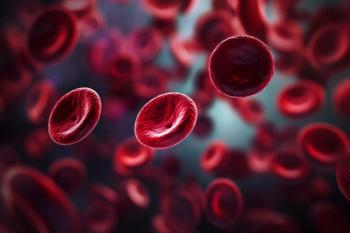
Genetic Factors May Predispose People with MPNs to Cardiovascular Events
The new report is believed to be among the first to examine cardiovascular risk in myeloproliferative neoplasms through a genetic lens. Mutations in the CALR gene may restore vascular dysfunction in some patients.
Patients with
Patients with MPN also commonly suffer from cardiovascular events, which are among the leading cause of death for people with MPNs, a group of conditions that leads to an overproduction of red and white blood cells and platelets.
“In general, it is thought that vascular endothelial dysfunction causes coronary spasm as well as venous and arterial thrombosis and leads to a high cardiovascular risk,” explained corresponding author
However, some existing evidence suggests genetic mutations may affect that risk. About three-quarters of patients with MPNs have a mutation involving a valine-to-phenylalanine change at position 617 of the JAK2 molecule (JAK2V617F mutations), the authors said. Many patients with MPNs also have calreticulin and myeloproliferative leukemia virus oncogene (CALR) mutations, Aoyama and colleagues added. Patients who are positive for JAK2V617F mutations are suspected to be at a higher risk of thrombotic complications and cardiovascular complications, while a CALR mutation has been linked with a better prognosis, Aoyama and colleagues said.
In
The investigators evaluated a total of 27 patients, 10 of whom had MPN, between 2014 and 2016. Seven of the patients with MPNs had polycythemia vera, and 3 had essential thrombocythemia.
The investigators measured adiponectin, which is protective of vascular endothelial dysfunction, and asymmetric dimethyl arginine (ADMA), which inhibitors adiponectin production. They also assessed the patients for genetic mutations.
The results suggested that genetic mutations were associated with vascular endothelial dysfunction, possibly due to increased endothelial oxidative stress or the inhibition of the nitric oxide (NO) pathway, Aoyama and colleagues said.
Of the 10 patients with MPNs, 5 had JAK2V617F mutations, and 3 had CALR mutations. Nitroglycerin-mediated dilation (NMD), adiponectin levels, and ADMA levels were similar in patients regardless of whether they had JAK2V617F mutations. However, patients who were positive for the mutations were less likely to have flow-mediated dilation (FMD).
“This suggests that vasodilation by NO and other factors may be related to vascular endothelial disorders in patients with JAK2V617F-positive MPN,” Aoyama and colleagues said.
Meanwhile, patients with CALR mutations had higher levels of adiponectin and lower levels of ADMA.
“This might suggest that adiponectin compensates and restores vascular dysfunction in MPN patients and that the suppression of ADMA boosts NO activity and maintains vascular endothelial function, which may lead to the low thrombosis risk in CALR-positive MPN patients,” they wrote.
CALR mutation status did not appear to affect NMD or FMD prevalence.
“Our findings suggest there may be a relationship between impairment of endothelial function and an increased occurrence of vasospasms in patients with MPN and also genetic mutations related to the occurrence of vasospasm,” the authors said.
Aoyama and colleagues said people with MPNs have an increased risk of vasospasm, and patients with polycythemia vera also have a greater occurrence of dysregulated NO levels and impaired endothelial-dependent flow-mediated vasodilation. However, they said this is believed to be the first study to look at the issue through the lens of genetic mutations.
They said their findings show that the high cardiovascular morbidity and mortality among patients with MPNs may trace back to these genetic mutations.
“In addition, these mutations may be helpful for informing risk stratification, therapeutic interventions, and precision medicine with respect to cardiovascular complications in patients with MPN,” they concluded.
Newsletter
Get the latest industry news, event updates, and more from Managed healthcare Executive.


















































